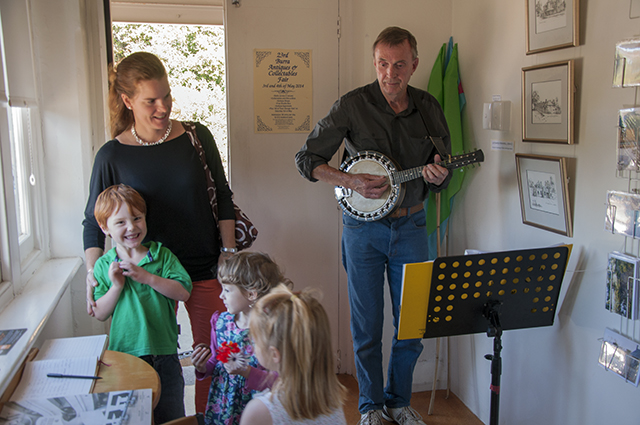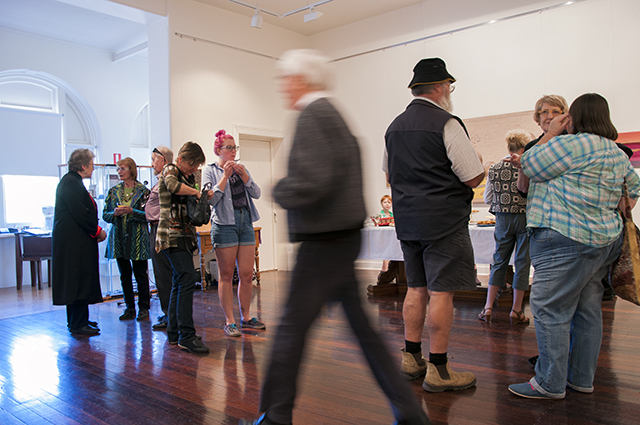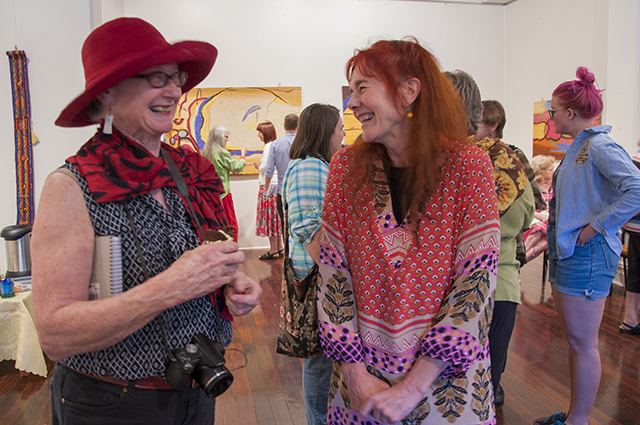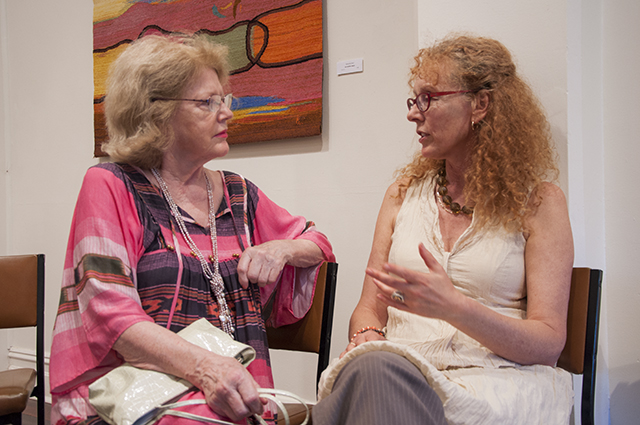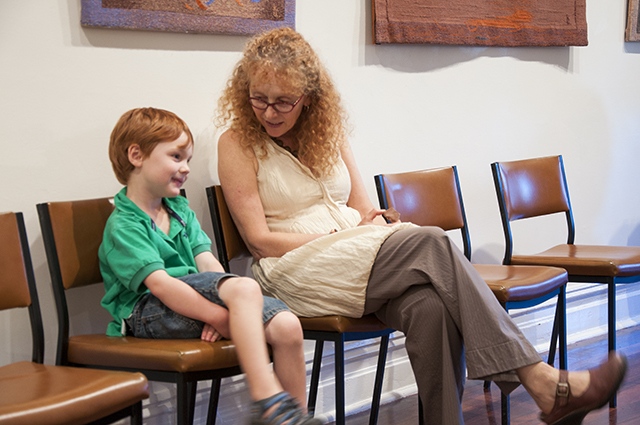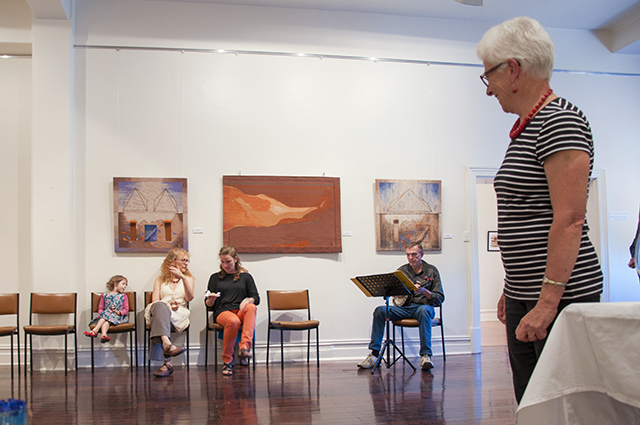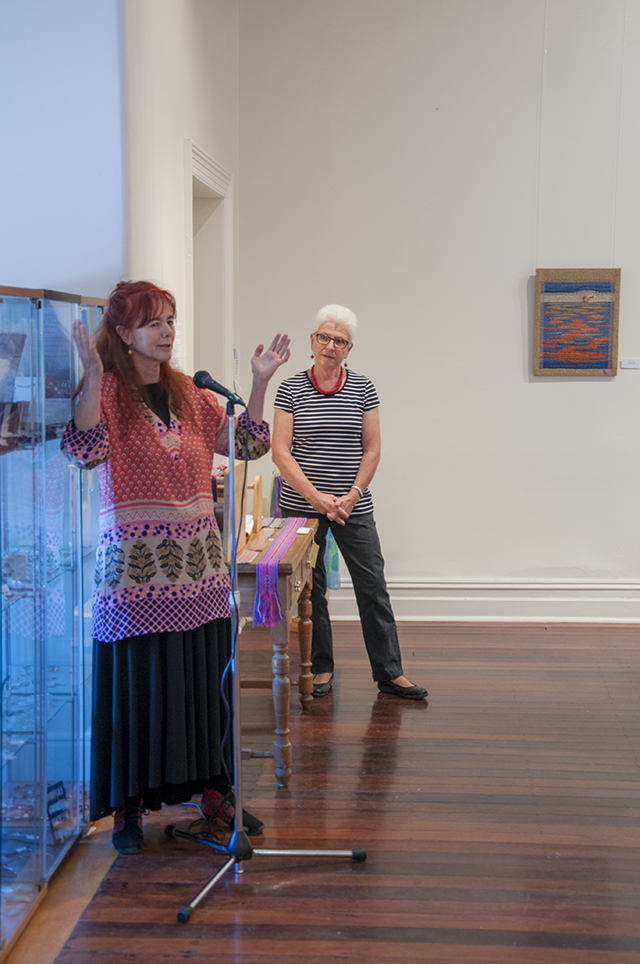Katharina Urban Tapestries – Transformation / Improvisation
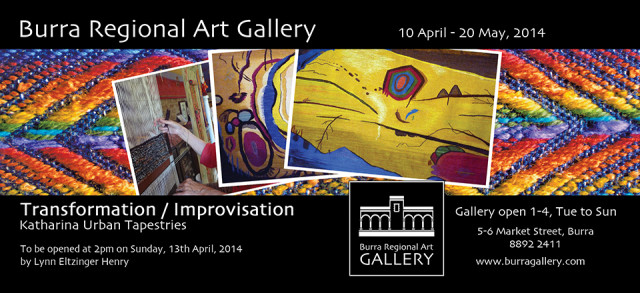
Katharina Urban, FRSASA
Master Weaver
Katharina studied hand weaving in Germany from 1950 – 1953 at Warburg and at Kries Berusschule Waldeck at Arolsen. From 1953 – 1958 she worked as a weaver with Ursula Reichert and Friedel Godhardt Fischer in their studios in Essen.
In 1959 she came to Australia and through the 60s was exhibiting at the Hand Spinners and Weavers Guild and many other galleries around Adelaide. By the 70s she was asked to judge at the Royal Adelaide Show. When she moved to the Barossa Valley in the 80s she was asked to judge at the Gawler Show. In the 90s she formalised her credentials by studying for her Art Certificate at North Adelaide TAFE, and tapestry weaving with Vera Haselgrove of the Jam Factory, Payneham. In 2005 she gained a Diploma of Fellowship in the Royal Society of Arts SA.
In August 1997 she took part in the Tapestry Touring Exhibition with the South Australian Touring Program, concluding August 1998.
Throughout those years she also participated in workshops and exhibitions both solo and group so it was no surprise when she was asked to join the team who were about to start work on two tapestries to celebrate the Bicentenary.
“Votes for Women” (240 x 175cm) and “Equal Before the Law” (240 x 192cm) are now both on display at Parliament House Adelaide.
In 1999 Katharina joined the team weaving “Puppetmaster” at the Hawke Centre, University of SA, designed by kay Lawrence.
In 2001 Katharina introduced weaving to the Barossa Valley through the weaving of a community tapestry “Woven Recital” now hanging in the Barossa Regional Gallery, Tanunda, SA. The story of this tapestry is told in Textile Fibre Forum No 71, 2003.
Katharina convened and interpreted a community heritage tapestry in Lobethal, which is shown at the Handspinners and Weavers Guild Hall, 196 South Road, Mile End.
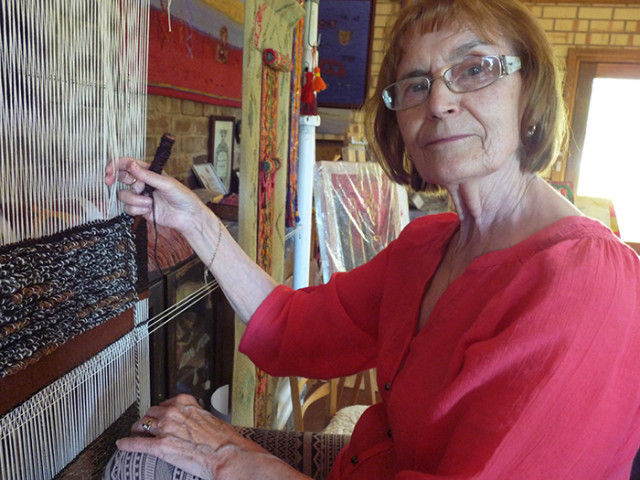
Katharina working in her studio at her home in Cockatoo Valley
“To begin a new work, my designs are first painted, starting with responsive lines and shapes. This leads to more freedom. Then, with the aid of black and white cartoons placed behind the warp, the new tapestry design is developed. Special shades are created using several threads of different colours – wool, silk, cotton or other fibres – on each bobbin. Thus, great subtlety and complexity within the design is achieved – just like mixing paint on my palette.
Weaving in this manner – beginning from the bottom and weaving to the top – requires good visualisation and organisational skills, while still allowing room for improvisation. The latter is an important part of my creative process.”
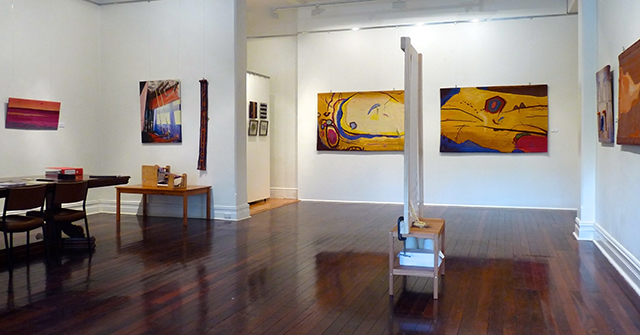
This view shows our own loom centrally set up for visitors and gallery volunteers. To the left is the inkle loom and above it Katharina’s painting of one of her big studio looms. The two large works on the back wall are “Bush Pond” and “Desert Pond”.
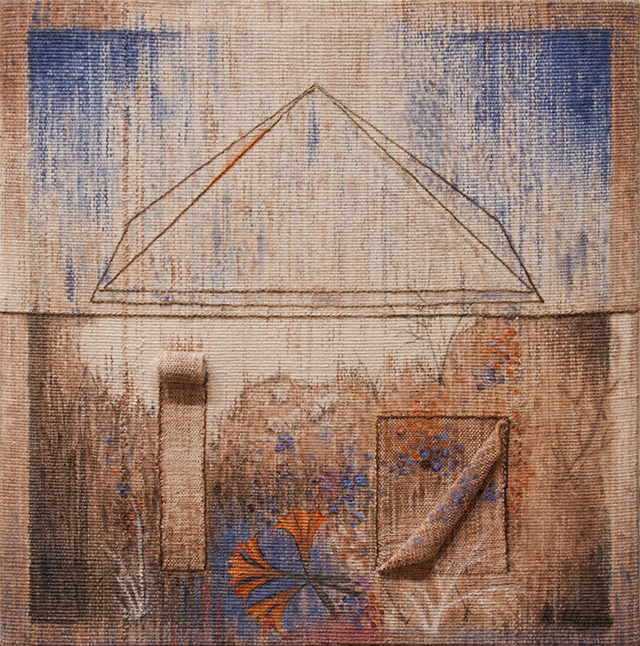
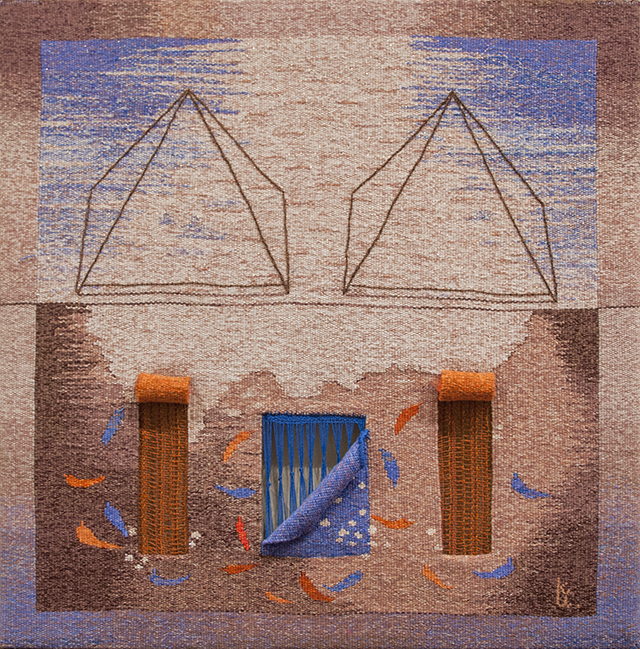
The desert tones of these 3 dimensional works Structural Gardens 1 and 2 shows views through windows and the cold air coming down. presented like a picture window and using colours of orange through browns to blue. The framing is beautifully woven in the colours of the composition – browns again through blue/violets to purple/browns and mushroom, the lines cleverly couched.
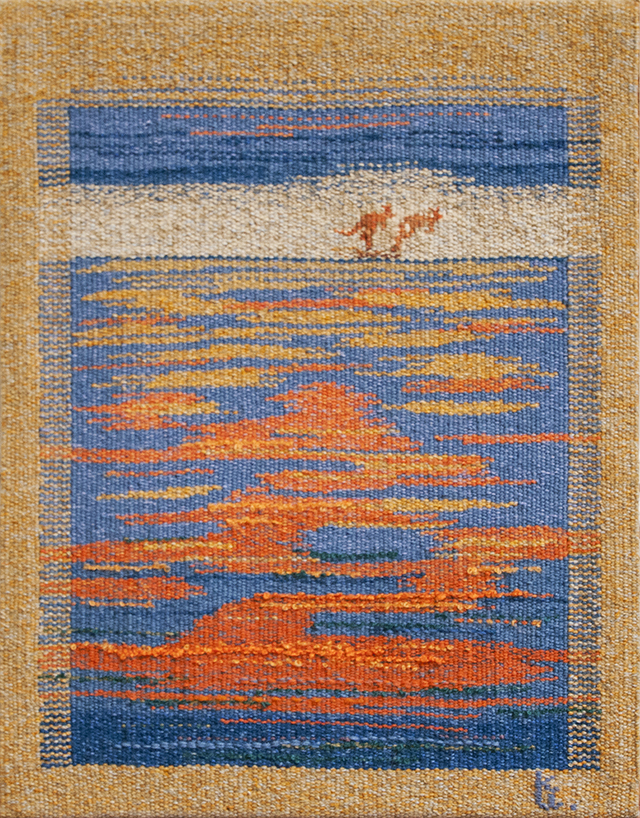
In “Nearly There” ‘roos hop off into the dusty distance. To make these delicate shapes in thread is a marvel! Note the sense of perspective, with the increasing textural effects at the foreground of the composition, the sun on the ground, the orange of local clay soils and the blue colours of evening.
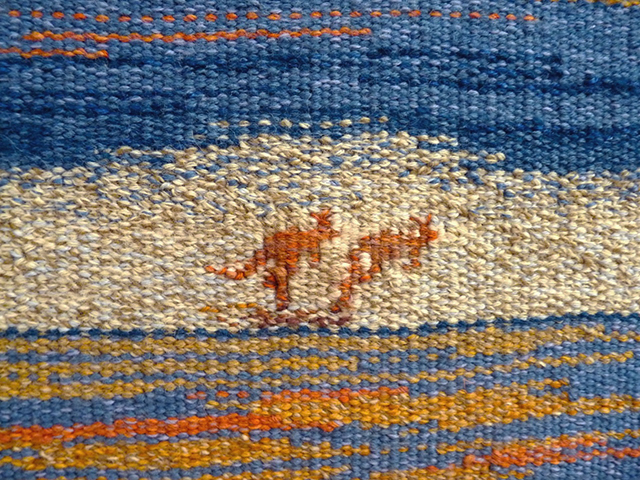
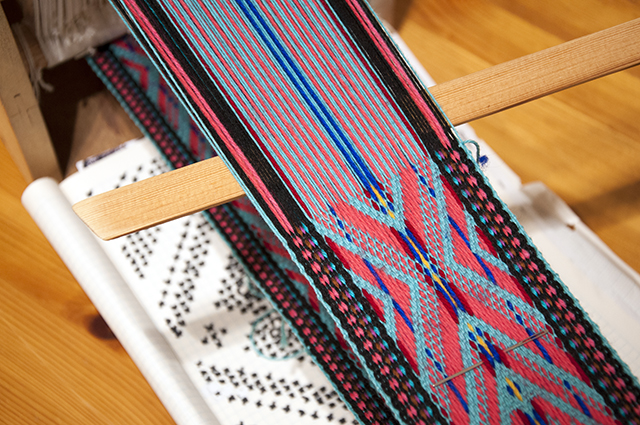
The narrow bands that inkle weaving forms are ideal for use as belts, trims, straps, ribbons, or garment hem decorations, for instance. The many varieties of color and pattern are limited only by the weaver’s imagination. Some modern uses include guitar straps and camera straps, colorful shoelaces, and there have been recent sightings of inkle bands as canoe tie-down straps.
Katharina’s use of the inkle loom, showing bands latticed together in “Woven Twice”, giving a strong modern effect for this historic technique.
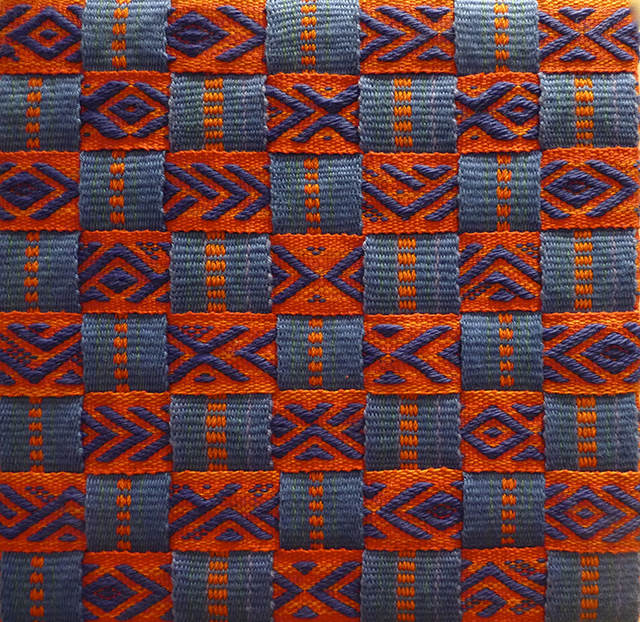
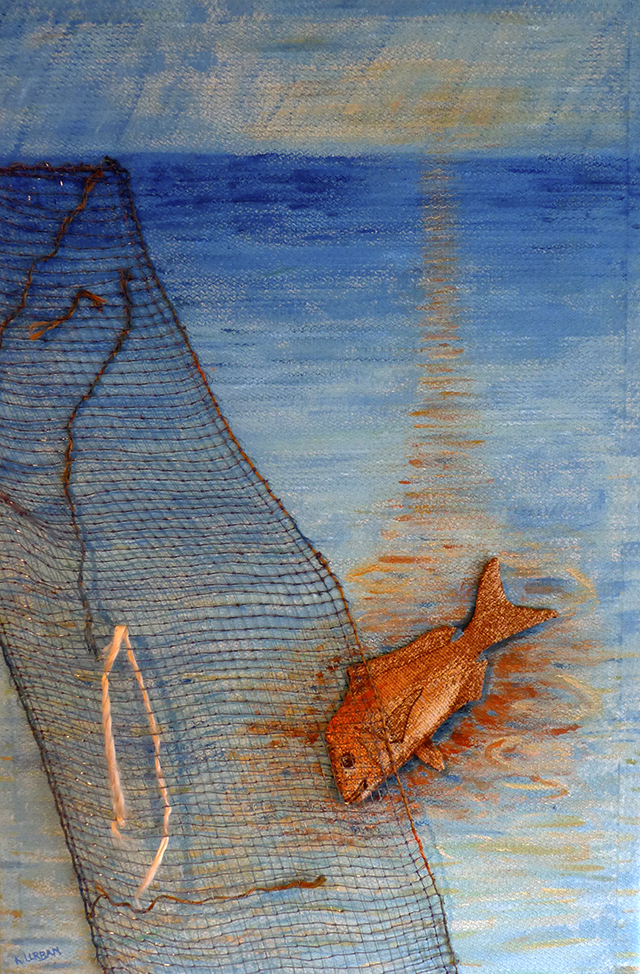
The assemblage “Evening Fishing” has painted ground with woven fish, added plastic net and seaweed statements.
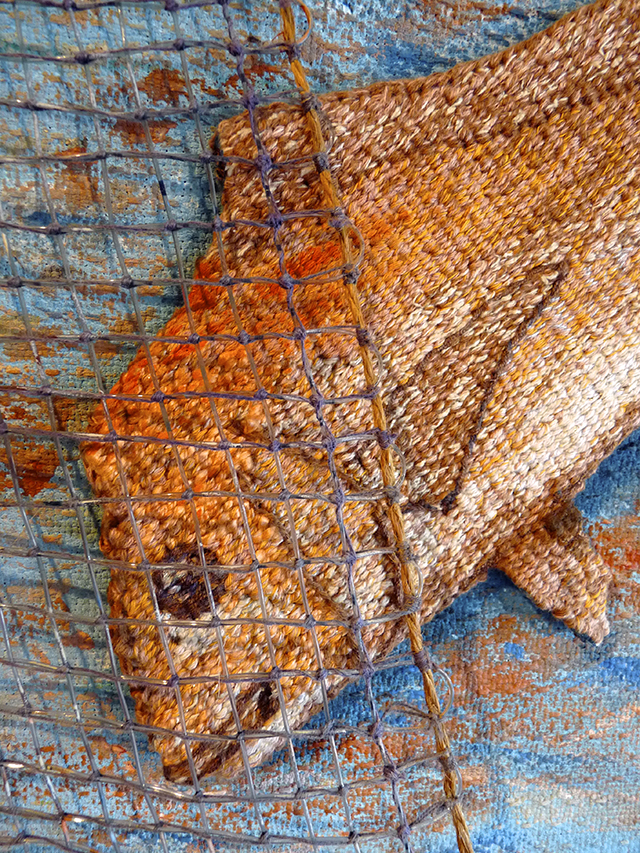
Thanks to Carol Griffiths of Melbourne, a welcome visitor to Burra Regional Art Gallery, for her much appreciated assistance with this article on Katharina Urban’s exquisite woven tapestries.
